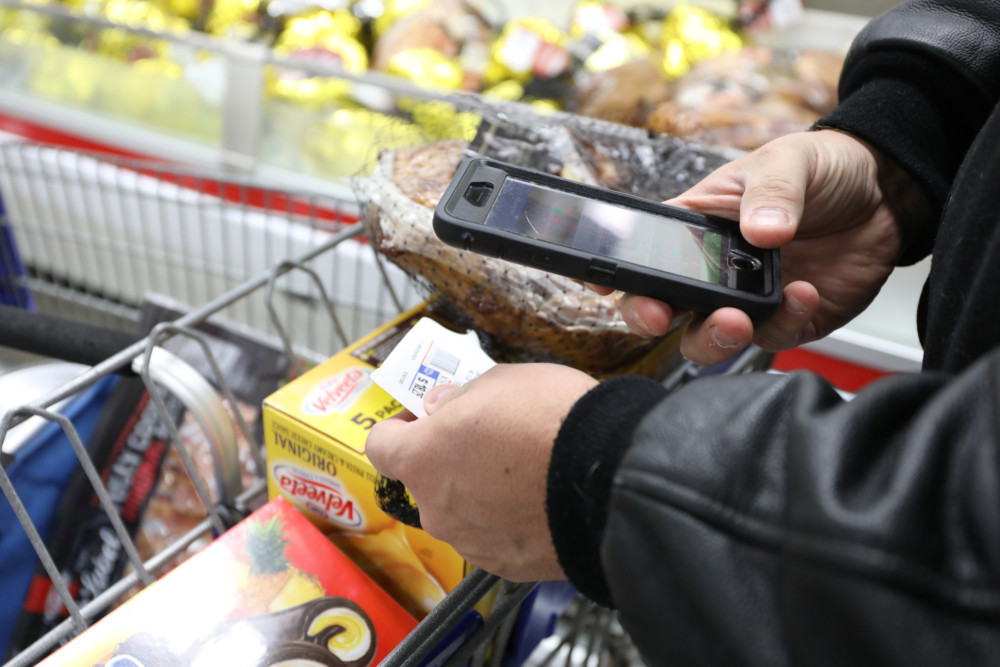By Lauren Zumbach
Chicago Tribune
WWR Article Summary (tl;dr) For years, the theoretically appealing but too-often irritating self-checkout experience hasn’t changed much. But now that many customers shop with smartphones, retailers are trying to speed the process with technology that can cut down the time spent waiting in line, while helping stores cut labor costs or free up cashiers for other tasks.
CHICAGO
Self-checkout is supposed to be a time-saver.
But that’s before you’re admonished about an “unexpected item in bagging area.” Or before you struggle to pick precisely which barcode-free apples are in your cart, Honeycrisp or Gala? Regular or organic? Or before you accidentally hit the button to pay with credit when you meant debit.
By the time you trudge off in search of human help, the reward for attempting to avoid the regular checkout line is an even longer checkout process.
For years, the theoretically appealing but too-often irritating self-checkout experience hasn’t changed much. But now that many customers shop with smartphones, retailers are trying to speed the process with technology that can cut down the time spent waiting in line, while helping stores cut labor costs or free up cashiers for other tasks.
Since October, all Sam’s Club stores have offered a smartphone app, Scan & Go, that lets customers scan items as they shop and pay on their phone, skipping the physical checkout counter entirely. An earlier version let customers scan as they shopped but still required payment at a traditional self-checkout machine.
Steve Hyzny, of suburban Chicago, downloaded the app and tried it for the first time at a Hodgkins Sam’s Club last week. He’s wary of apps that want to store his credit card info but said scanning was straightforward and sped up his trip.
“It’s almost too easy,” Hyzny said.
Likewise, when Amazon’s Seattle grocery store, Amazon Go, opens to the public next year, shoppers will bypass checkout lanes altogether, automatically charging their purchases to their Amazon account.
Amazon has shared few details about how the technology will work, beyond that it can track when items are removed from shelves using some of the same technology that powers self-driving cars. Even so, retail industry observers expect Amazon will be the company that takes the concept forward.
Unlike traditional self-checkout, Amazon Go isn’t asking customers to take on the cashier’s role, using similar equipment, but getting rid of checkout altogether, said Neil Stern, senior partner at Chicago-based consulting firm McMillanDoolittle.
To use Scan & Go, at Sam’s Club, a customer uses his or her smartphone camera to scan each item’s barcode as the shopper adds it to the cart. After a customer pays through the app, an employee at the exit scans a barcode the app displays on the customer’s phone that will show the employee a list of items paid for, to check against the contents of the cart.
“Retail is still very much that legacy retail business of manpower and people putting things on shelves. While self-checkout is a step in the right direction, Amazon Go feels like a giant leap forward,” said Tom Caporaso, CEO of e-commerce technology company Clarus Commerce.
Until recently, convenience and grocery stores were more worried about services like in-store pickup than better self-checkout, said Wes Schroll, CEO of Madison, Wis.-based mobile shopping company Fetch Rewards. Its Shop Fetch app will be in 110 stores by January, including several in the Midwest.
Customers use that smartphone app to scan items as they add them to a shopping cart, and the app totals purchases and displays discounts and nutrition information. Shop Fetch still requires users to pay at a traditional register but transmits purchase information to the cashier to speed the process, Schroll said.
Since the Amazon Go announcement, Schroll said interest in the company’s technology has increased.
Self-checkout isn’t a new idea, but less-than-seamless technology may have been holding it back, said Stern, who described Amazon’s system as a “game-changer” if it works as promised and if customers get on board with a new way of shopping.
“Before, it might have been something nice to play around with. Now it’s something they have to take seriously,” he said.
More efficient checkout also means stores will need fewer checkout lanes, freeing up space for more inventory, and potentially fewer employees.
If Scan & Go takes off, cashiers might be able to spend more time doing other customer service tasks, but Sam’s Club has no plans to eliminate traditional checkout counters, Gee said. The warehouse club is keeping its self-checkout registers too.
“We want people to get in and out of the club however they want,” Gee said. “This is just another option.”














































































































































































































































































































































































